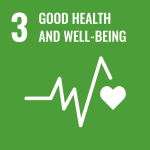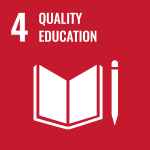UGEC3928 Language Disorders
Course Description
(UGEC3928 is double-coded with LING3208.)
This survey course introduces non-clinical students to fundamental concepts of language disorders in paediatric and adult populations. Characteristics of primary language impairment, aphasia, dysarthria, and hearing impairments, as well as articulation, fluency, and voice and other related disorders affecting language are among the topics to be discussed. Diagnostic techniques and treatment strategies are also introduced.
Discussions will be made on the impacts of language impairment on one’s cognitive development, academic performance, as well as physical, psychological and social well-being across the lifespan (SDG#3 Good Health and Well-Being). Students will be able to gain a better understanding of how people suffering from these disorders are deprived from healthy lives (SDG#3 Good Health and Well-Being), quality education (SDG#4 Quality Education), employment opportunities (SDG#8 Decent Work and Economic Growth), and social equality (SDG#10 Reduced Inequalities). Students will also come to appreciate the benefits brought by the relevant assessment and treatment in promoting personal wellbeing (SDG#3 Good Health and Well-Being), ensuring inclusive and equitable quality education (SDG#4 Quality Education), providing full and productive employment and decent work for all (SDG#8 Decent Work and Economic Growth), as well as reducing inequality in the society (SDG#10 Reduced Inequalities).
Learning Outcome
At the end of the course, students will be able to
- Describe the fundamentals of language and communication, and basic characteristics of language disorders
- Explain the etiology of different language disorders
- Analyze patient signs and symptoms and attribute them to specific language disorder types, and reflect on how these disorders may create barriers to quality education for children (SDG#4 Quality Education) and decent work for adults (SDG#8 Decent Work and Economic Growth)
- Identify and analyze the problems brought by language disorders with respect to good health and wellbeing (SDG#3 Good Health and Well-Being), quality education (SDG#4 Quality Education), decent work (SDG#8 Decent Work and Economic Growth), and inequality reduction (SDG#10 Reduced Inequalities)
- Investigate how the diagnostic techniques and treatment strategies can serve to solve the problems brought by language disorders, including those from disadvantaged backgrounds (SDG#10 Reduced Inequalities)
- Evaluate the difficulties and challenging in implementing assessment and treatment for language disorders for all peoples (SDG#10 Reduced Inequalities)
- Reflect on the role they can play in promoting wellbeing for all members of the society regardless of their visible and invisible limitations to participate in society (SDG#3 Good Health and Well-Being)







